
75 Years ago, something was found... it would become known as "The Thing" aka "The Great Seal Bug".
This website isn't for re-telling the story, it's well documented on Wikipedia.
This website is dedicated to creating a model of it and the process I went through in order to create an accurate representation from the few images of it available on the internet.
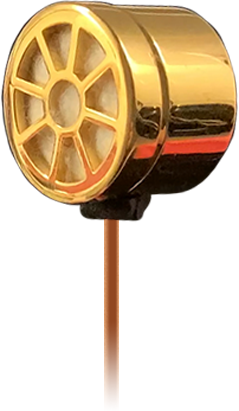
The Thing was originally mounted inside The Great Seal, however, I wanted my version to be touched, taken down, disassembled when the curious ask about it, and then quickly mounted back on the wall.
So my version is mounted to a plinth, which has an embedded magnet. The Thing also has an embedded magnet so it securely snaps into place

 I got in contact with a few different CNC shops, unfortunately they weren't able to help.
I would love to have done this myself, I like the look of the Bantam Tools CNC
but it's out of my range for a small project. In the end I went with Shapeways for the main body
assembly.
I got in contact with a few different CNC shops, unfortunately they weren't able to help.
I would love to have done this myself, I like the look of the Bantam Tools CNC
but it's out of my range for a small project. In the end I went with Shapeways for the main body
assembly.
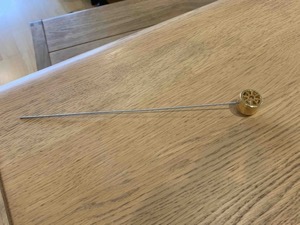 Call me crazy, but the antenna that "The Thing" had was very thing and had a flattened head,
I again didn't know how I was going to make it at this point, so I had one made in a non-conductive
aluminium, the finish on the piece is terrible, and it's very easy to bend.
Note the units pieces screwed together great
Call me crazy, but the antenna that "The Thing" had was very thing and had a flattened head,
I again didn't know how I was going to make it at this point, so I had one made in a non-conductive
aluminium, the finish on the piece is terrible, and it's very easy to bend.
Note the units pieces screwed together great
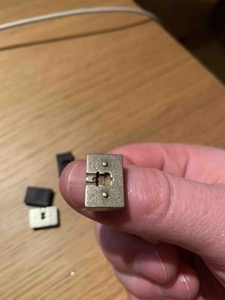 An injection mold made of polished bronzed silver, I was amazed that this could be printed
at all, the main issue straight away was that the locking keys had rounded off and were not
sharp, this meant that the two halves would not fit together, I tried to fix this, but in the
end just ended up sanding them clean off
An injection mold made of polished bronzed silver, I was amazed that this could be printed
at all, the main issue straight away was that the locking keys had rounded off and were not
sharp, this meant that the two halves would not fit together, I tried to fix this, but in the
end just ended up sanding them clean off
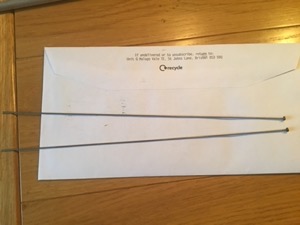 Two sample parts arrive from China.
I was trying to figure out how this antenna could be made, 3D printing
wasn't an option as it's too expensive and it wouldn't fit inside the printer.
I posted on upwork for someone to produce me one, maybe someone had a watchmakers lathe?
It wasn't until about a week later when a Chinese company posted and said why I don't I just
press forge it....my mind was blown
Two sample parts arrive from China.
I was trying to figure out how this antenna could be made, 3D printing
wasn't an option as it's too expensive and it wouldn't fit inside the printer.
I posted on upwork for someone to produce me one, maybe someone had a watchmakers lathe?
It wasn't until about a week later when a Chinese company posted and said why I don't I just
press forge it....my mind was blown
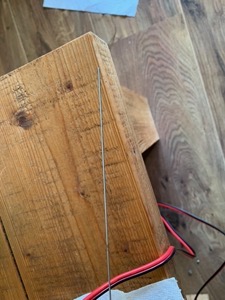 Here's a better picture of one of the ends plated, but I could see I was
running into a problem. Whenever I plated one end, the other end would
get messed up, Was it the voltages? or did I just need a better setup.
I didn't snap a photo, but in the end, I created a larger bath for the antenna so that it
could be submerged as one piece.
Here's a better picture of one of the ends plated, but I could see I was
running into a problem. Whenever I plated one end, the other end would
get messed up, Was it the voltages? or did I just need a better setup.
I didn't snap a photo, but in the end, I created a larger bath for the antenna so that it
could be submerged as one piece.
Throughout the build process I had to learn how to create rubber molds, Electroplate Nickel, Source different materials, Injection molding & Gold Electroplating.
It was a really fun, but long journey from inception to it hanging on my wall.
Hopefully you'll appreciate the amount of work that went into it.